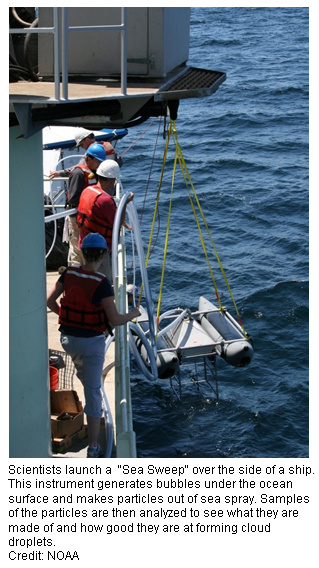By Penny Paugh
Scientists have been examining the self-regulating factors of climate and the oceans. A study conducted at NOAA’s Pacific Marine Environmental Laboratory in Seattle, WA, has been looking at the role of the tiny organisms and the planet’s atmosphere. “For many years, we thought that chemical emissions from phytoplankton was the major player in cloud drop formation in the marine atmosphere and, as such, had a strong influence on the amount of solar radiation reflected back into space,” said Timothy Bates, a supervisory research chemist.
The two-decade long study has concluded that the role of the microscopic organisms in the formation of cloud drop formation is actually quite small. However, they did find that sea spray organics are emitted directly into the atmosphere as particles. They think there is a potential link between ocean biology and cloud drop formation. Studies will likely now be made on the multiple sources of cloud droplet formation linked to the marine atmosphere.
More about Phytoplankton
The importance of phytoplankton should not be diminished. These tiny organisms inhabit the upper sunlit layer of most oceans and bodies of fresh water. They are agents for “primary production” – the creation of organic compounds from carbon dioxide dissolved in the water, a process that sustains the aquatic food web. They also account for over half of the photosynthetic activity on the planet. A byproduct of photosynthesis is oxygen.
References
Goldman, J. “Scientists recast phytoplankton’s role in regulating climate change,” NOAA Press Release, November 2011, retrieved from: http://researchmatters.noaa.gov/news/Pages/phytoplankton.aspx
Wikipedia, Photosynthesis, http://en.wikipedia.org/wiki/Photosynthesis
Wikipedia, Phytoplankton, http://en.wikipedia.org/wiki/Phytoplankton


Comments are closed.